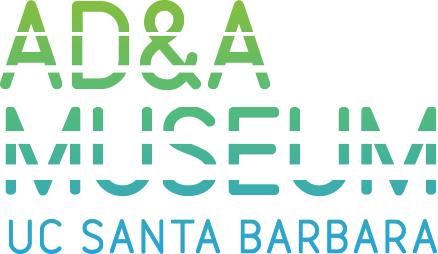Inspired by the logic and beauty of nature, Southern California architect Kendrick Bangs Kellogg designed striking structures — some of the most celebrated ever built — seeking to blend them with their natural environments.
Now, a gift to UC Santa Barbara’s Art, Design & Architecture Museum (AD&A Museum) brings his archive to the public, housed in the museum’s Architecture and Design Collection (ADC).
The acquisition is part of the museum’s commitment to “growing and diversifying the ADC’s holdings with the work of underrepresented figures such as Ken Kellogg,” said Gabriel Ritter, AD&A Museum director. “It is an honor for our institution to be entrusted with the preservation of Kellogg’s architectural legacy, and look forward to sharing his one-of-a-kind designs with audiences far and wide.”
The donation is a unique opportunity “to foster the study of nature-inspired architecture, which is rarely featured in historical reviews of high modernism,” said Silvia Perea, curator of the ADC, “but also to produce the first comprehensive monographic exhibition and publication on the architect’s legacy.”
Stemming from an autonomous creative process, his buildings exhibit a strong artistic dimension that thrives on spatial fluency and exuberance. Adding to the particularity of Kellogg’s architecture is the integration of the work of artists and craftsmen in its interiors and finishes. Simultaneously, Kellogg’s designs respond to the specific conditions of their respective sites, a premise that makes them all unique. A firm believer in learning by doing, the architect himself participated in building his designs, often turning construction sites into educational arenas for inexperienced workers.
Kellogg’s projects range in scale, budget and geography — from the domestic to the institutional realm. Among his most celebrated buildings are the Onion House in Hawaii; the Yen Residence in San Diego; the High Desert House in Joshua Tree and the Hoshino Chapel in Japan. Additionally, Kellogg authored numerous Chart House restaurants across the nation, some of which have sadly been lost.
“Despite their historic value as emblems of spatial and structural innovation,” Perea said, “some of the structures Kellogg designed are naturally showing the passing of time. My hope is that by making his papers accessible, his built legacy can be researched, disseminated and, ultimately, preserved.”
Kellogg’s archive encompasses hundreds of drawings, photographs, slides and project files illustrating the architect’s prolific yet understudied career. UCSB students, trained in paper treatment, are currently undertaking the papers’ conservation. Once this process is complete, the archive will be cataloged, an endeavor estimated to take at least a couple of years.
“Kendrick Bangs Kellogg was the architect that every young designer wanted to be,” stated architect Wallace Cunningham, a close friend of Kellogg. “He was 100% natural in every way. Zero pretense, with an inquisitive mind and phenomenal three-dimensional perception. He studied the structure of nature. He was a keen observer of environments and envisioned a world that was beautiful, just, and free.”
To honor the donation of Kellogg’s papers to the ADC, and to fill the significant gap his absence represents in architectural history, the AD&A Museum is planning an exhibition dedicated to the architect for 2026. An illustrated publication will accompany the exhibition.
The architect’s daughter, Bryn Kellogg Hamson, said the family feels fortunate to have the AD&A Museum curate and archive her father’s work. “Having his work preserved and available to all is something that was very important to him,” she added.
This significant donation greatly expands the ADC’s holdings on nature-inspired, organic architecture, and enriches its status as a premier resource for the study of the built environment in Southern California.
The Kellogg Project will consist of two phases. Phase 1 currently focuses on the archive’s conservation, preservation, and processing as is made possible thanks to the generous support of the Kellogg Family; The Palm Springs Preservation Foundation; The Indian Wells Preservation Foundation; Karen Prinzmetal; Robin and Eryn Donaldson; and an anonymous donor. Phase 2 will encompass the future exhibition and publication. For more information about the Kellogg Project or to offer your support for Phase 2, the contact is Silvia Perea (silviaperea@ucsb.edu).

